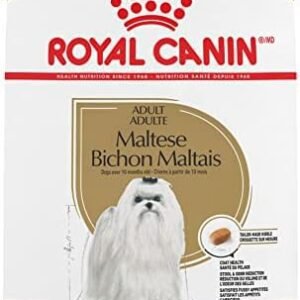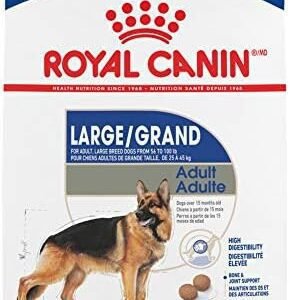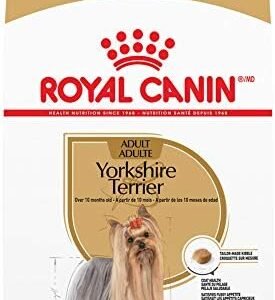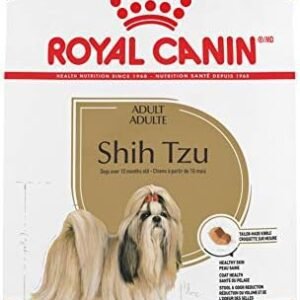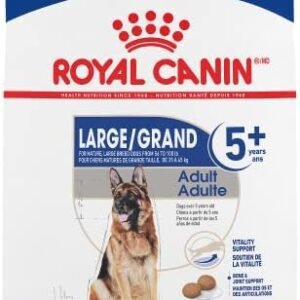Introduction
Did you know that yams are one of the most wholesome and nutrient-packed foods in the world? These vibrant, sweet-tasting root vegetables are beloved by many, gracing our dinner tables in various delicious forms. But what about our furry friends, our ever-loyal canine companions? Can dogs partake in the delight of yams? It’s a question that arises from the desire to share our favorite foods with our four-legged family members, and in this article, we will explore the answer.

As a dog owner, it’s essential to strike a balance between providing our pets with tasty treats and ensuring their safety and well-being. Our dogs’ diets are a topic of utmost importance, and understanding which human foods are safe for them is a key part of responsible pet ownership. In this article, we delve into the world of yams and their suitability for dogs. We will not only answer the question of whether dogs can eat yams but also provide insights into the advantages and disadvantages of incorporating this root vegetable into your pet’s diet.
Our canine companions deserve the best, and that includes a wholesome diet.Therefore, we will discuss how much yam is suitable for dogs, what precautions to take when feeding them this treat, and how yams can complement their regular diet while keeping them safe and healthy. So, if you’re curious about whether yams can be a part of your dog’s culinary adventures, read on to find the answers you seek.
Table of Contents
Can dogs eat yams?
Yams, the vibrant and delicious root vegetables, are a staple in many human diets. It’s natural to wonder whether our canine companions can also partake in this tasty treat. In this section, we will delve into the question of whether yams are safe for dogs and explore the nutritional aspects of yams.
Are yams safe for dogs?
Yams themselves are not considered toxic or dangerous to dogs. Many dogs enjoy the specific taste and texture of yams, making them a potential treat option. While they are generally safe, there are some precautions to consider. Yams should always be cooked before feeding them to dogs. Raw yams can be difficult for dogs to digest and might pose a choking hazard. Additionally, some dogs might have digestive sensitivities, and introducing new foods, including yams, should be done with caution to monitor any adverse reactions.
Nutrition Facts of Yams:
Let’s take a closer look at the nutritional benefits that yams can offer to dogs. Yams are rich in various essential nutrients that can be beneficial for your furry friend. Here’s a table summarizing the key nutritional components of yams:
| Nutrient | Amount per 100g |
|---|---|
| Calories | 118 |
| Carbohydrates | 28.1g |
| Dietary Fiber | 4.1g |
| Sugars | 0.5g |
| Protein | 1.5g |
| Fat | 0.2g |
| Vitamins | |
| – Vitamin A | 2914 IU |
| – Vitamin C | 18.4 mg |
| – Vitamin B6 | 0.3 mg |
| – Folate | 5 mcg |
| Minerals | |
| – Potassium | 816 mg |
| – Magnesium | 21 mg |
| – Phosphorus | 55 mg |
| – Calcium | 21 mg |
Nutritional Benefits for Dogs:
Yams offer several nutritional benefits for dogs. They are a great source of dietary fiber, which can aid in digestion and regulate bowel movements. The moderate carbohydrate content provides a good source of energy for your pet. Yams are also rich in vitamins, particularly vitamin A, vitamin C, and vitamin B6, which support various bodily functions, including skin health, immune system support, and energy metabolism.
In terms of minerals, yams contain essential elements like potassium, magnesium, phosphorus, and calcium, contributing to overall health and proper muscle and bone function.
However, it’s important to note that yams should complement your dog’s primary diet, not replace it. While they offer many nutritional benefits, yams should be part of a balanced diet, and moderation is key. Feeding your dog yams in excessive amounts can lead to digestive issues, including diarrhea, and contribute to excessive calorie intake, which may result in weight gain.
Drawbacks of Feeding Yams:
While yams have nutritional benefits, it’s crucial to be aware of potential drawbacks. One significant concern is overfeeding. Yams should be given to your dog in moderation. An excessive intake of yams can lead to gastrointestinal distress, including diarrhea or upset stomach. Additionally, the high carbohydrate content in yams can contribute to weight gain if consumed in large quantities, which may not be ideal for all dogs, especially those with weight management concerns. Therefore, it’s essential to maintain a balanced approach to including yams in your dog’s diet.
Moreover, always prepare yams for your dog by cooking them thoroughly. Raw yams are more challenging to digest and can be a choking hazard. Cooking yams softens them and makes them safer for your dog to consume.
In conclusion, yams can be a safe and nutritious addition to your dog’s diet when fed in moderation and properly prepared. They offer a range of essential nutrients, and many dogs enjoy their taste and texture. However, it’s crucial to exercise caution, monitor your dog’s response to yams, and avoid overfeeding. By including yams in your dog’s diet responsibly, you can provide them with a wholesome and delicious treat.
How much yams can a dog eat?
Now that we’ve established that yams can be a part of your dog’s diet, it’s important to understand how much yams are safe and appropriate to feed to your furry friend.
Emphasize Moderation:
As with any treat or addition to your dog’s diet, moderation is key when feeding yams to your dog. Yams should not replace your dog’s primary diet but should be incorporated as an occasional treat or supplement. It’s crucial to ensure that treats, including yams, do not make up more than about 10% of your dog’s daily calorie intake. This balance is essential to avoid overconsumption of calories, which can lead to weight gain and potential health issues.
Start Small and Monitor:
When introducing yams to your dog’s diet, it’s a good practice to start with a small piece and carefully observe how your dog reacts to it. Not all dogs may respond the same way to new foods, and some dogs might have sensitivities to certain ingredients. By beginning with a small portion, you can assess your dog’s tolerance and any potential allergic reactions.
Preparation is Key:
To ensure that yams are safe and easy for your dog to digest, it’s advisable to prepare them in a certain way before offering them. Raw yams can be challenging for dogs to digest, and their firm texture can pose a choking hazard. Therefore, cooking yams thoroughly is essential. You can either boil or bake yams, ensuring they are soft and easy for your dog to chew. Avoid adding any seasonings, spices, or additives during the cooking process, as these can be harmful to your dog.
Size and Breed Considerations:
The size and breed of your dog may affect how much yams they can tolerate. A larger dog may be able to consume more yams without any problem compared to a smaller dog. When determining the appropriate portion size for your dog, it’s essential to consider their individual characteristics, including their weight, age, and activity level. For example, an active and larger breed dog may be able to enjoy a slightly larger serving of yams. Consult with your veterinarian if you have concerns about the suitable portion size for your specific dog.
Appropriate Serving Sizes Based on Weight:
While serving sizes can vary based on individual factors, here’s a general guideline for offering yams to your dog based on their weight:
- Small Dogs (up to 20 pounds): Start with a small piece, approximately the size of a grape. This can be gradually increased based on your dog’s response.
- Medium Dogs (20 to 50 pounds): Begin with a portion about the size of a golf ball, and adjust as needed.
- Large Dogs (50 pounds and above): A portion equivalent to one or two golf balls is a suitable starting point.
It’s essential to note that these are general guidelines, and the best approach is to observe how your dog responds to yams and make adjustments accordingly. Some dogs may tolerate yams well, while others may have sensitivities or allergies. Always prioritize your dog’s well-being by ensuring their comfort and safety when introducing new foods, like yams, to their diet.
In summary, when feeding yams to your dog, focus on moderation, start with a small amount, cook the yams thoroughly, consider your dog’s size and breed, and monitor their reaction closely. By taking these precautions, you can safely and responsibly include yams in your dog’s diet as an occasional and nutritious treat.
What are the risks of feeding yams to dogs?
While yams offer several health benefits for dogs, it’s essential to be aware of potential risks and adverse reactions that can occur when feeding them to your furry friend.
Addressing Food Allergies:
One potential risk when feeding yams to dogs is the possibility of food allergies. Just like humans, dogs can develop allergies to various foods, including yams. Food allergies in dogs can manifest as skin irritations, itching, ear infections, or gastrointestinal issues. While food allergies are relatively uncommon, it’s crucial to monitor your dog’s reaction when introducing yams for the first time. If you notice any signs of an allergic reaction, such as excessive itching, hives, or digestive problems, it’s advisable to discontinue feeding yams and consult your veterinarian.
Short-Term Signs of Food Intolerance:
Food intolerance is different from a food allergy, as it doesn’t involve the immune system but can still cause short-term discomfort for your dog. When it comes to yams, some dogs may have difficulty digesting them properly. Gastrointestinal distress, including symptoms like diarrhea, vomiting, or gas, can occur if your dog is intolerant to yams. If you notice these signs after feeding yams, it’s essential to avoid further consumption and offer your dog a bland diet to soothe their stomach. Remember that yams should always be cooked to avoid digestive issues, as raw yams are more challenging to digest.
Potential Hazards in Yam Components:
Yams are generally safe for dogs when prepared and served correctly. However, it’s crucial to be aware of potential hazards related to specific components of yams. Oxalates, naturally occurring compounds in yams, can sometimes be a concern. High oxalate levels in yams can lead to the formation of kidney stones in both humans and dogs. To minimize the risk, opt for sweet potatoes over yams, as they contain fewer oxalates. Additionally, ensure that yams are cooked thoroughly, as cooking can reduce oxalate levels. If your dog has a history of kidney issues or is prone to kidney stones, consult your veterinarian before adding yams to their diet.
Signs and Symptoms of Adverse Reactions:
When feeding yams to your dog, it’s essential to be vigilant and watch out for any signs and symptoms of adverse reactions. Here are some potential issues and their associated signs to be aware of:
Allergic Reactions: Signs can include itching, hives, facial swelling, vomiting, diarrhea, coughing, or difficulty breathing. If you observe these symptoms, consult your veterinarian immediately.
Gastrointestinal Distress: Signs include diarrhea, vomiting, gas, or discomfort. Mild digestive upset may resolve on its own, but if it persists or worsens, consult your vet.
Kidney Stones: If your dog experiences symptoms such as painful urination, frequent urination, or blood in the urine, it could be indicative of kidney stones. Consult your veterinarian if these signs occur.
By being aware of the risks associated with feeding yams to your dog and closely monitoring their reaction, you can take proactive measures to address any adverse effects promptly. Keep in mind that every dog is unique, and while yams can be a nutritious addition to their diet, it’s essential to prioritize your dog’s well-being and tailor their diet to their specific needs and sensitivities.
In the next section, we will explore how to feed yams to your dog and make the experience enjoyable for them.
How to Feed Yams to Your Dog and Make It More Enjoyable for Them
Feeding yams to your dog can be a delightful experience for both you and your furry companion. Yams offer a range of creative possibilities, from simple preparations to homemade treats and snacks that can enhance your dog’s meals and add variety to their diet.
Ways to Feed Yams to Your Dog:
Cooked and Mashed: One of the easiest and most popular ways to feed yams to your dog is by boiling or baking them until they are soft and then mashing them. This method makes yams more digestible for your dog and allows you to serve them as a side dish. Make sure to peel the yams before cooking, as the skin can be challenging for dogs to digest.
Yam Fries: Dogs often enjoy the texture of yam fries. Slice yams into thin strips, toss them lightly with a touch of dog-friendly oil (like olive oil), and bake them until they are crispy. This can be a fantastic alternative to store-bought dog treats while providing a satisfying crunch for your pup.
Yam and Protein Combo: To create a well-rounded meal for your dog, mix cooked and mashed yams with a lean source of protein, such as boiled chicken, turkey, or lean ground beef. This combination can provide a balanced and nutritious meal that your dog will love.
Yam Cubes or Chunks: For a simple yet enjoyable treat, cut cooked yams into small cubes or chunks. These can be given to your dog as bite-sized pieces for snacking or as training rewards. Remember to let the yams cool before serving.
Yam Toppers: Enhance your dog’s regular meals by adding a few yam slices or cubes as a topper. This can make their usual kibble more appealing and add extra flavor and nutrients to their diet.
Yam Puree: Create a yam puree by blending cooked yams with water until you achieve a smooth consistency. Drizzle this puree over your dog’s food as a sauce to make their meals more enticing. This is especially helpful if your dog is a picky eater.
Homemade Treats and Snacks:
In addition to incorporating yams into your dog’s daily meals, you can get creative in the kitchen and whip up some homemade treats and snacks.
Yam Dog Biscuits: Bake your own yam dog biscuits using yam puree, whole wheat flour, and a touch of water or broth. Shape them into fun dog-friendly shapes or use a cookie cutter. These homemade biscuits can be a tasty and healthy reward.
Yam and Peanut Butter Cookies: If your dog enjoys peanut butter, consider making yam and peanut butter cookies. These treats are bound to become a favorite, and they’re easy to prepare. Combine yam puree, peanut butter, whole wheat flour, and a little water, then bake until they’re golden brown.
Frozen Yam Pops: In hot weather, your dog might appreciate a cool treat. Freeze yam slices or yam puree in ice cube trays for a refreshing snack that can also soothe their gums and teeth.
Yam Recipes for Dogs:
To get you started, here are a couple of simple yam recipes for your dog:
Yam and Turkey Meatballs:
Ingredients:
- 1 cup cooked and mashed yams
- 1/2 cup cooked ground turkey
- 1 egg
- 1/4 cup oat flour (or other dog-friendly flour)
- A pinch of dog-safe herbs like parsley or rosemary
Instructions:
- Preheat your oven to 350°F (175°C).
- In a large bowl, combine all the ingredients and mix until they form a dough-like consistency.
- Shape the mixture into small meatballs or patties.
- Place them on a baking sheet lined with parchment paper.
- Bake for about 20-25 minutes or until they’re cooked through.
- Allow them to cool before serving.
Yam Dog Biscuits:
Ingredients:
- 1 cup yam puree
- 2 1/2 cups whole wheat flour
- 1 egg
Instructions:
- Preheat your oven to 350°F (175°C).
- In a large bowl, mix the yam puree and egg.
- Gradually add the whole wheat flour until you have a firm dough.
- Roll out the dough on a floured surface and cut it into biscuit shapes.
- Place the biscuits on a baking sheet lined with parchment paper.
- Bake for 25-30 minutes until they’re firm.
- Let them cool before serving.
Keep in mind that these treats should be given in moderation and as part of a balanced diet. If you’re unsure about specific recipes or dietary choices for your dog, consult with your veterinarian.
In the next section, we will address common questions about feeding yams to dogs.
10 FAQs About Dogs Eating Yams
As we delve deeper into the world of dogs and yams, it’s essential to address some common questions that pet owners often have regarding this unique food item. Let’s get the facts straight about yams and dogs.
1. Can dogs eat yams from the grocery store?
Yes, dogs can enjoy yams from the grocery store, provided that they are cooked, unseasoned, and free from any harmful additives. It’s best to opt for organic or pesticide-free yams if possible.
2. Can I feed my dog raw yams?
Feeding your dog raw yams is not recommended. While cooked yams are safe and beneficial for dogs, raw yams may be challenging for your furry friend to digest and can pose a choking hazard. Always cook yams before offering them to your dog.
3. Can yams be the primary food for my dog?
Yams should not be the primary food in your dog’s diet. While they offer some nutritional benefits, they lack essential nutrients that a balanced dog food provides. Yams can complement your dog’s diet as a side dish or occasional treat but should not replace their primary source of nutrition.
4. Are there different types of yams?
Yes, there are various types of yams, including orange-fleshed yams and white-fleshed yams. Both are safe for dogs to eat when cooked. Keep in mind that the nutritional content may vary slightly between types, but they are generally similar in terms of safety and digestibility.
5. Can yams cause allergies in dogs?
Yams are not a common allergen for dogs. However, like any food, there’s always a slight risk of an allergic reaction in some individuals. If you’re introducing yams into your dog’s diet for the first time, it’s a good idea to start with a small amount and monitor your dog for any signs of allergies.
6. Can yams be harmful to dogs?
While yams are generally safe for dogs when cooked and served in moderation, there are some precautions to keep in mind. Avoid seasoning yams with ingredients like garlic or onions, which can be toxic to dogs. Additionally, excessive consumption of yams can lead to digestive upset due to their high fiber content.
7. Can yams cause gas in dogs?
The high fiber content in yams may cause gas in some dogs. If you’re introducing yams to your dog’s diet for the first time, do so gradually to allow their digestive system to adjust. Start with small portions to minimize the likelihood of excess gas.
8. Are there any health benefits to feeding yams to dogs?
Yes, yams offer some health benefits for dogs. They are a good source of dietary fiber, vitamins, and minerals. Yams provide vitamins A and C, essential for your dog’s immune system, skin, and coat health. The fiber content in yams can aid in digestion and regulate bowel movements.
9. How should I store yams for my dog?
Store yams in a cool, dark place, similar to how you would store potatoes. Keep them away from direct sunlight, and avoid refrigerating them, as cold temperatures can negatively impact their taste and texture. When storing cooked yams for your dog, keep them in the refrigerator in an airtight container for up to a week.
10. Can yams help with dog weight management?
Yams can be a valuable addition to your dog’s diet when managing their weight. Their high fiber content helps your dog feel full, reducing the likelihood of overeating. However, portion control is crucial to prevent excessive calorie intake, which can lead to weight gain.
In Conclusion
Yams can be a safe and nutritious addition to your dog’s diet when prepared and served thoughtfully. These tubers offer a range of benefits, including essential nutrients and dietary fiber, which can contribute to your dog’s overall well-being. However, moderation is key, as excessive consumption of yams may lead to digestive issues.
Always consult with your veterinarian before making significant changes to your dog’s diet or introducing new foods, especially if your dog has specific dietary needs or allergies. By following best practices and ensuring that yams complement your dog’s primary food, you can share the enjoyment of this delightful and healthy treat with your furry companion. If you have any additional questions or concerns about feeding yams to your dog, don’t hesitate to reach out to your vet for guidance.
Conclusion
In this comprehensive exploration of dogs and yams, we’ve uncovered valuable insights into the safety and potential benefits of this intriguing food item for our furry companions. As we wrap up, it’s essential to reiterate the key takeaways to ensure the health and happiness of your four-legged friend.
Dogs can indeed eat yams, and they can find these sweet and nutritious tubers to be a delectable treat. However, there are crucial considerations to bear in mind. Yams should be cooked, unseasoned, and served in moderation. While yams offer valuable nutrients, such as vitamins A and C and dietary fiber, they should never replace your dog’s primary diet. They are best enjoyed as a supplementary treat.
Yams can be part of a balanced and varied diet, contributing to your dog’s overall well-being. Always consult your veterinarian before making significant dietary changes, especially if your dog has specific dietary requirements or allergies.
If you’re looking for alternative fruits or treats to diversify your dog’s snacks, consider options like apples, blueberries, or carrots. These wholesome choices are lower in sugar and acidity and can provide similar or superior nutritional benefits. Just remember to remove any seeds or cores before offering them to your dog.
We hope this article has equipped you with valuable information to make informed decisions about your dog’s diet. If you have questions or experiences to share, we invite you to engage with us in the comments section below or through our social media channels. Your insights can help other pet owners make the best choices for their beloved canine companions.




















